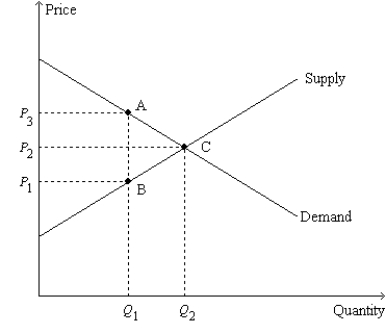Figure 8-11 
-Refer to Figure 8-11. Suppose Q1 = 4; Q2 = 7; P1 = $6; P2 = $8; and P3 = $10. Then the deadweight loss of the tax is
Definitions:
Higher Price
An increase in the cost of a good or service, often reflecting factors like demand and supply changes, production costs, or market conditions.
Supply And Demand Theory
A basic economic principle that describes how the quantity of goods provided by producers and the quantity desired by consumers affect the market price and allocation of resources.
Sales Tax
A tax imposed by a government on sales of goods and services, typically calculated as a percentage of the purchase price.
Burden
In an economic context, this refers to the impact of a tax or other financial obligation on the parties involved, often measured in terms of how it affects their wealth or consumption.
Q178: Refer to Scenario 8-3. Suppose that a
Q178: Refer to Figure 9-7. The equilibrium price
Q208: The principle of comparative advantage asserts that<br>A)
Q216: Many economists believe that restrictions against ticket
Q224: According to many economists, government restrictions on
Q241: Refer to Figure 7-34. Suppose the government
Q280: By comparing the world price of pecans
Q286: Refer to Figure 8-25. Suppose the government
Q361: When the government places a tax on
Q379: Suppose a tax is imposed on baseball